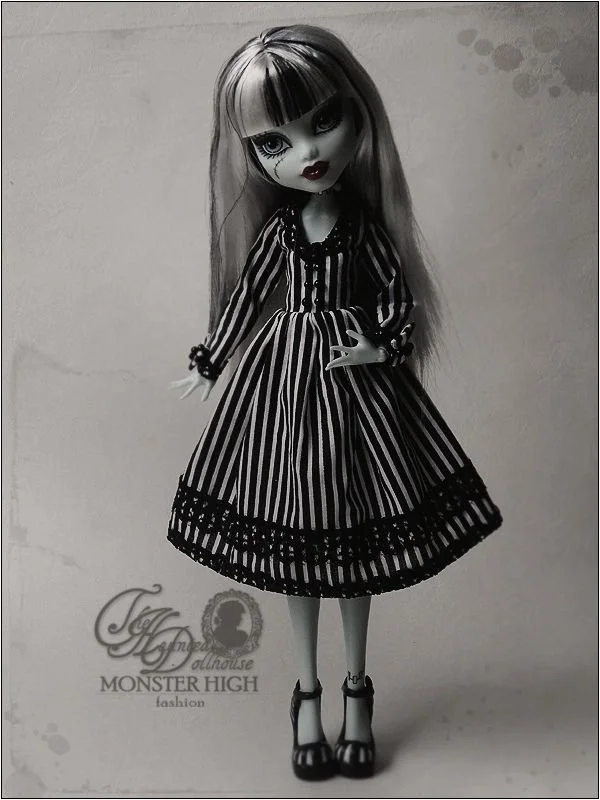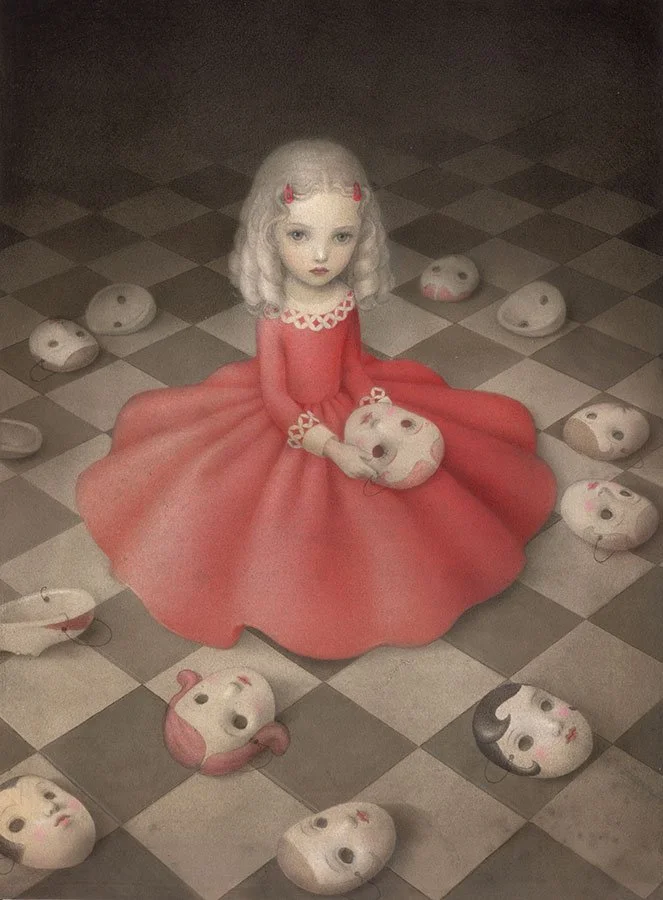An Exploration of Dolls and the Second Self
Olympia, Nicoletta Ceccoli
Last year, I wrote a poem entitled Koukla Mou. It’s a Greek phrase I stumbled across in a book once. It was used by a young girl’s father as a term of endearment, meaning, ‘my doll’.
I want to make you mine,
I want to dress you up,
My pretty little voodoo,
Koukla mou, koukla mou.
I want to bring you gifts,
I want to braid your hair,
I spend my days adoring you,
Koukla mou, koukla mou.
I want to hold you tight,
I want to kiss your cheeks,
my love for you is true,
Koukla mou, koukla mou.
You think I don’t know,
But I saw you blink,
Your heart beats too,
Koukla mou, koukla mou.
What does it mean to be someone’s ‘doll’? Is it to be as precious and fragile as a real human, but unliving? Tiny- almost ornamental, held dear, hugged tight, kept close, cared for as though there’s every possibility it could blink back at you one day.
Sometimes I think my love for creating started with my dolls. I had cupboards full of all kinds: blue-skinned tattooed Monster High dolls; plush baby dolls with mouths slightly open for plastic milk bottles; tiny wooden dolls resembling something like a clothesline peg, that I dressed up with fabrics so that they came alive. As long as I could create them and adorn them and love them, they lived. Playing with dolls was like embedding my own thoughts and desires into a completely detached, unique vessel- they were my second self, my unreal ‘image’.
To a child, every doll is alive. The untethered imagination of children, free from ego or reasoning, teaches us of realms many adults have lost access to. Possibilities of magic, supernatural encounters, enchanted objects- some say these experiences can be reduced to simple child’s play, but history proves a sense of truth to the charm that dolls possess.
In Greek antiquity, Voodoo dolls (referred to in Greek as kolossos) were commonplace in many magic rituals from as early as the Archaic period. Similarly to curse/ binding tablets, dolls or poppets were designed to vicariously control the physical and emotional state of another living person, through actions performed on an inanimate ‘double’ of them. These rituals relied on the principle of ‘sympathetic magic’, meaning a magician acts out a procedure on models of the intended victim, and what he does is mysteriously transmitted to the victim. The binding aspect of kolossoi magic made it particularly essential for love spells, curses, and burial rites.
Oftentimes love spells (referred to as philtrokatadesmos in Greek), featured two kolossos, male and female, that could be sculpted from wax, clay, or any other malleable material. Dolls could then be used to invoke the power of particular love or underworld Gods such as Eros, Hermes, or Persephone; through the sculpting of their attributes (bows and arrows, swords, etc). Once the doll was crafted, the manipulation could begin. Many of these dolls were tied or bound in some way so that the victim too, was restricted- both physically in the sense that they may receive symptoms of tightness and pain, and psychologically in the sense that the thinking of victims was restricted only to the inflictor. It was also very common to pierce the doll with needles. In one spell from 4th Century AD, a doll is pierced thirteen times with a bronze needle:
“Take thirteen bronze needles and insert one of them into the brain while saying, “I pierce your brain (insert her name)”; insert two into her ears, two more into her eyes, one into her mouth, two below her rib cage, one into her hands, two into her vulva and anus, and two into the soles of her feet, while on each occasion saying once, “I pierce the (insert name of part) of (insert her name), so that she may think of no one, except me alone, (insert your name).”
Many kolossos recovered by archaeologists were found to be deposited in graves, suggesting that what followed the physical altering of the doll was likely a burial ritual that sealed the fate of the victim. If the spell was intended to curse the victim in some way, it wasn’t unusual for kolossos to be deposited “beside the grave of one untimely dead or dead by violence”. This was because these were the graves thought to harbour the most active spirits. Usually an untimely or violent death was jurisdiction enough to refuse the deceased a proper burial, therefore denying them of true ‘rest’. Because these graves were believed to be more connected to the spirit world, burying kolossoi close to them allowed for the Gods or Goddesses invoked in the ritual to further fulfil the spell.
This is one example of a doll being deposited by a grave. The Mnesimachos doll and its coffin case was recovered from the Athenian Ceramicus cemetary, deposited at what is estimated to be around 400 BC. It is now held in Ceramicus Museum, Athens.
You can see that several names have been inscribed on the top of the coffin lid. These were likely witnesses of the spell. One of the names ‘Mnesimachos’ is inscribed on the right leg of the doll, likely to identify the doll with that person. The doll’s arms are crossed in a bound position, and holes in the lid suggest the coffin was pierced with nails. This makes the doll similar to a curse tablet.
In some cases, kolossos also served the purpose of ‘laying ghosts’, meaning dolls were deposited at gravesites so that they could provide ‘new bodies’ for ghosts. Allowing the dolls to serve as a new body, meant that the deceased was rendered incapable of rising. The dolls contained their human aspects so that their actual body could be deadened. This concept of ‘transferable life’ is something we see a lot throughout not only ancient magic but more modern supernatural stories too: think changelings. Perhaps this is also where the fear around moving, feeling dolls (usually with a vengeance similar to that of the restless dead), stems from. Think: Annabelle, Chucky, M3gan.
Why is it that dolls are believed to possess this cosmic power? How have these dolls been relied upon to invoke Gods, carry out prophecies, curse, bind, torture people?
I think what has made dolls so appealing to humans for so long is the same reason why ChatGPT has over 400 million active users weekly. Humans gravitate towards the uncanny. We love that dolls resemble ourselves- who wouldn’t like a Coraline doll version of yourself like the ones this Tik Tok creator makes? Like animals attract their own, humans are designed to have unique connections to those things that mirror ourselves. It’s when the doll’s capabilities extend far beyond what we expect or intend them to be, that we begin to get scared.
A Girl Hides Secrets, Nicoletta Ceccoli
The doll is an idealised ‘double’ of the human, a vessel restricted physically but charmed with unlimited spiritual agency. The doll is unliving, and can escape the consequences of fulfilling the human’s darkest desires. Perhaps it is this human aspect that enchants dolls at all. This is why I draw the comparison to ChatGPT- AI is feared for it’s uncanniness, its inhumanity. But weren’t we the ones that created it? Isn’t it human responses that fuel it? Aren’t these ‘lifeless’ creations just mirrors to real life, real desire?




